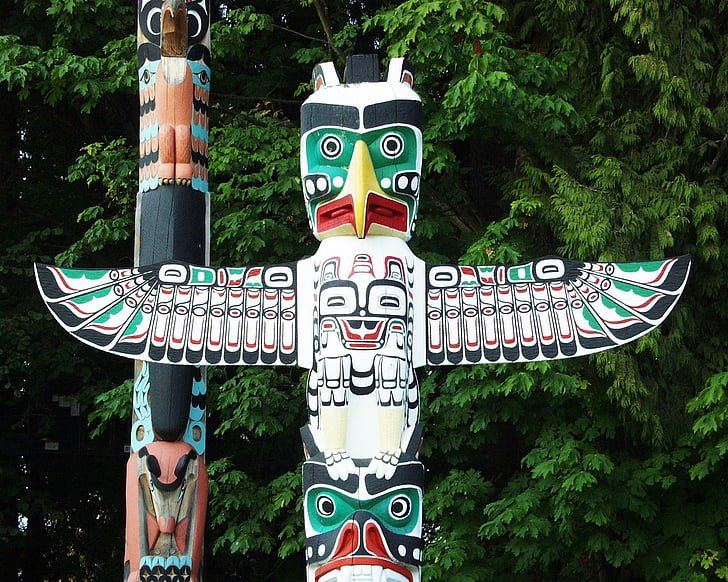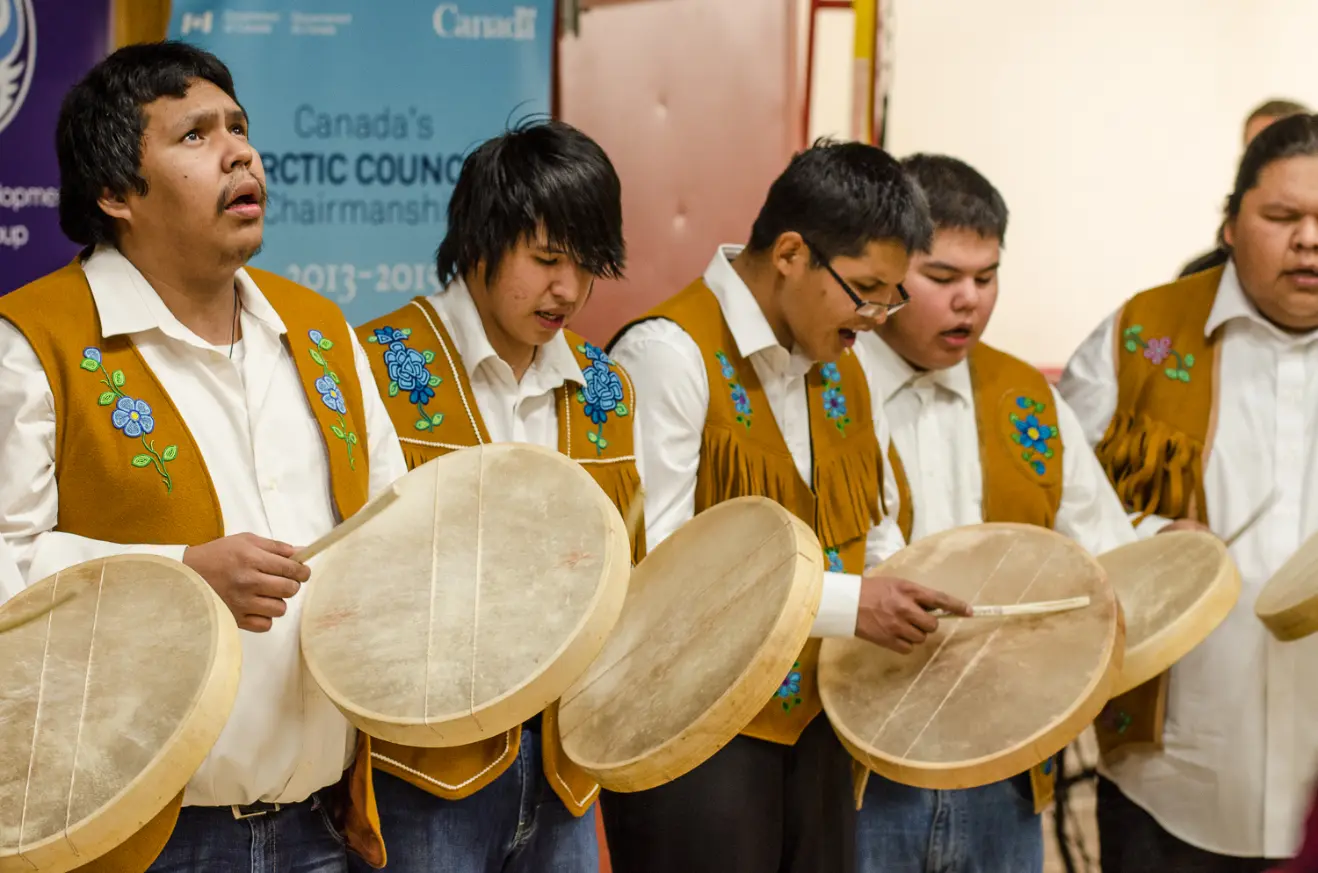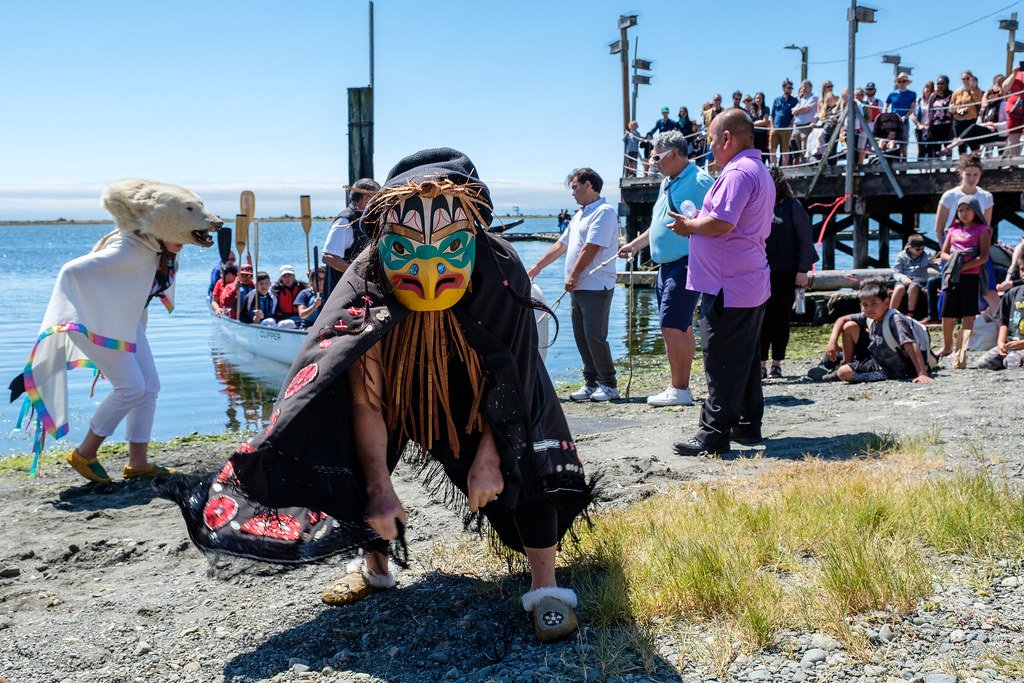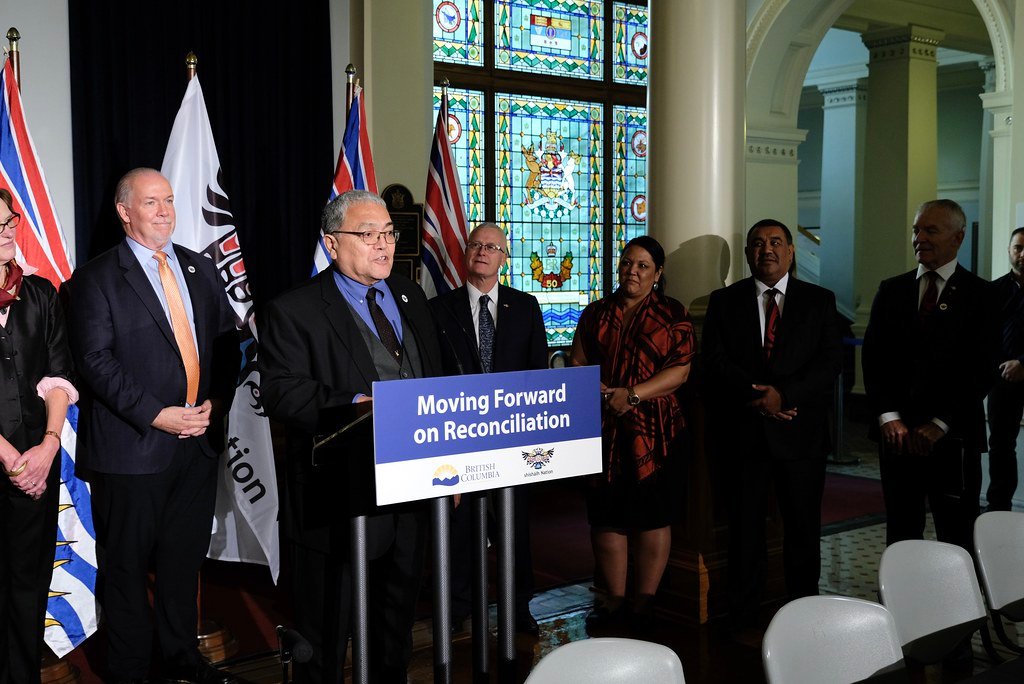Nomadicsage.com @2024
Nomadicsage.com @2024

Experiences that shape Indigenous communities in Canada are as diverse as the cultures themselves. By exploring their rich histories, you will gain insight into the enduring effects of colonization, cultural resilience, and ongoing struggles for recognition and rights. Understanding these perspectives is necessary for fostering respect and reconciliation between Indigenous and non-Indigenous peoples. This post aims to guide you through authentic indigenous experiences in Canada, highlighting both the challenges faced and the triumphs achieved.
A deep understanding of Indigenous experiences in Canada requires an exploration of the historical context that shaped their societies.
From the time before European contact to the present day, these experiences are marked by resilience, adaptation, and ongoing struggles.
This rich history unfolds the dynamics of the interactions between Indigenous peoples and colonizers, illustrating the profound impact on culture, land, and identity.
By examining this historical lens, you will gain insight into the complexities of Indigenous life in modern Canada.
About 500 diverse Indigenous nations thrived across Canada long before European colonization, each possessing unique cultures, languages, and social structures.
These societies were often guided by a deep understanding of the land, practicing sustainable resource management and developing rich oral traditions that conveyed their histories and spiritual beliefs.
Your exploration of pre-colonial societies will reveal the sophisticated governance systems and trade networks that existed across the vast Canadian landscape.
The arrival of Europeans in the 16th century profoundly disrupted Indigenous lives, inflicting devastating consequences that persist today.
Colonization introduced foreign policies and practices that sought to dismantle Indigenous cultures, leading to significant loss of land and autonomy.
Many Indigenous peoples faced violence, forced relocation, and exposure to new diseases that decimated populations.
These changes forged lasting social, economic, and spiritual impacts that continue to influence Indigenous communities.
With the onset of colonization, Indigenous peoples faced a barrage of violent conflicts, forced assimilation, and widespread disease outbreaks resulting from European contact.
Government policies, including the establishment of residential schools, aimed to strip away your culture, language, and identity, leaving lasting scars on generations.
Despite these challenging circumstances, many Indigenous communities have shown remarkable resilience and are actively reclaiming their cultures, languages, and lands.
Understanding this impact is vital to grasping the contemporary significance of Indigenous experiences in Canada.
Some Indigenous communities in Canada have rich cultural heritages that celebrate their histories, traditions, and unique identities.

This heritage is expressed through various forms, including language, art, spirituality, and community practices, which are fundamental in connecting individuals to their ancestors and the land.
As you explore these traditions, you will gain a deeper understanding of their significance and the diverse ways these communities contribute to the cultural mosaic of Canada.
About 70 Indigenous languages are spoken across Canada, each representing a unique worldview and cultural perspective.
These languages are not merely forms of communication; they carry stories, teachings, and wisdom passed down through generations.
You will discover that oral traditions are vital for preserving cultural heritage, enriching community life, and maintaining a sense of identity among Indigenous peoples.
For Indigenous communities, art and spiritual practices are intertwined and serve as expressions of their cultural identity.
Through traditional crafts, music, and ceremonies, you will come to appreciate how these practices provide a sense of belonging and connection to the land. They embody the values and beliefs that guide Indigenous ways of life.

At the core of Indigenous art and spiritual practices lies a profound connection to nature and an inherent belief in the interconnectedness of all living things.
Through art forms such as pottery, weaving, and carving, as well as rituals like smudging, you will recognize how these expressions reflect sacred stories and cultural teachings.
Furthermore, the evolution of these practices continues today, as artists and spiritual leaders adapt to modern influences while preserving traditional methods.
Engaging with these art forms and practices can lead you to a richer understanding of Indigenous worldviews, creating a bridge between cultures and fostering respect for their enduring legacy.
For many Indigenous communities in Canada, the struggle for rights and governance is a journey deeply rooted in history and culture.
The quest for autonomy, recognition, and self-determination continues to shape their identity and the relationships they cultivate with the Canadian government.
This chapter investigates into the frameworks that define Indigenous governance, the treaties that protect rights, and the ongoing evolution of self-governance models.
Governance in Indigenous communities is heavily influenced by a complex tapestry of treaties and legal frameworks that have been established over centuries.
These agreements serve not only as legal instruments but also as a reflection of mutual respect and acknowledgment of rights.
Understanding these treaties is fundamental to grasping the current landscape of Indigenous governance and your role in supporting these rights.
The landscape of governance for Indigenous peoples is evolving, with many communities embracing self-governance models that reflect traditional values and modern needs.

These models prioritize cultural identity, community involvement, and sustainable development, allowing you to see how Indigenous leadership is re-defining success.
Considering the shift towards self-determination, many Indigenous communities have taken control of their governance structures.
This shift emphasizes the importance of cultural reclamation, encouraging you to engage with and support these unique forms of governance.
Tools such as the Self-Government Agreements empower communities to make decisions that directly affect their lives.
However, the process is not without challenges. Issues such as land disputes and negotiation with the federal government can complicate governance efforts.
It is crucial for you to stay informed and recognize the resilience and innovation demonstrated by Indigenous leaders as they navigate these modern governance frameworks.
Despite the rich cultural heritage of Indigenous communities in Canada, they grapple with significant socioeconomic challenges.
These hurdles manifest in various forms, including limited access to quality education, inadequate housing, and high unemployment rates, which collectively impact both individual and community well-being.
An ongoing issue for many Indigenous people is the disparity in education and employment opportunities. Systemic barriers often limit your access to quality education, resulting in lower graduation rates and fewer job prospects.
This cycle perpetuates a lack of economic stability and self-sufficiency within Indigenous communities.
Disparities in health and wellness are prevalent among Indigenous populations. You might experience higher rates of chronic diseases, mental health issues, and limited access to healthcare facilities.
These challenges are intertwined with a legacy of historical trauma and social inequalities that continue to affect your overall health.
And while these health disparities present serious concerns, there are positive efforts underway to address them. Initiatives focused on traditional healing practices and community wellness programs aim to empower you and your community.
By emphasizing cultural identity and community connections, these programs work to improve your physical and mental health outcomes, encouraging a holistic approach to well-being.
Engaging in these initiatives can lead to increased resilience and a stronger sense of community belonging, ultimately fostering a healthier future.
Your understanding of Indigenous experiences in Canada should include the themes of resilience and revitalization, emphasizing the strength of Indigenous communities in overcoming historical adversities.
These communities continuously work to rebuild their cultural identities and reclaim their rights, demonstrating a profound capacity to adapt and thrive despite external challenges.
This ongoing journey enables Indigenous peoples to preserve their heritage while fostering a sense of pride and belonging for future generations.
Initiatives within Indigenous communities are pivotal in fostering resilience and revitalization. Through grassroots organizing, community members launch programs that focus on education, health, and cultural practices.
These initiatives empower youth and adults alike to reconnect with their heritage, encouraging participation in traditional activities and the preservation of Indigenous languages.
Such efforts not only strengthen community ties but also promote overall well-being.
Revitalization movements are imperative for asserting Indigenous identity and sovereignty in Canada.
These movements involve the reawakening of traditions, languages, and practices that colonialism threatened to erase. By engaging in art, storytelling, and education, Indigenous groups work to restore their cultural heritage, cultivating a renewed sense of pride.
This resurgence not only benefits individual community members but also imparts valuable knowledge to the broader society, fostering respect and understanding.
Movements for cultural revitalization are significant as they challenge the remnants of colonialism and promote a harmonious future.
From language immersion programs to traditional eco-practices, these efforts highlight the dynamic nature of Indigenous cultures and encourage intergenerational knowledge transfer.
By rallying support and involvement from community members, these movements aim to create an inclusive space where cultural practices flourish and the voices of Indigenous peoples are amplified, resisting ongoing struggles and asserting their rightful place in Canadian society.
Not only have Indigenous communities preserved their cultures, but they actively engage in contemporary conversations shaping Canada’s future.
By exploring Fifteen authentic ways to connect with Indigenous Canada, you can gain insights into their vibrant traditions, values, and perspectives that continue to evolve, reflecting the dynamic nature of their identities in today’s society.
Around Canada, Indigenous activists are leading the charge for social and environmental justice, advocating for Indigenous rights and sovereignty.
Through grassroots movements and national campaigns, they seek to amplify their voices, challenge systemic injustices, and build a better future for their communities.
Representation in media plays a significant role in shaping perceptions of Indigenous peoples.
You can understand that increased visibility of Indigenous stories helps combat stereotypes and fosters a more nuanced understanding of their cultures and experiences.
The portrayal of Indigenous peoples has evolved, yet it still faces challenges. While some media outlets strive for authentic representation, others perpetuate stereotypes or overlook important narratives.
It’s vital for you to seek out and support content that reflects the diversity and resilience of Indigenous communities, acknowledging their complexities and celebrating their contributions to society.
By engaging with genuine Indigenous voices, you can help rectify historical misrepresentations and promote a better understanding of their contemporary realities.
Presently, understanding Indigenous experiences in Canada enhances your awareness of the rich diversity of cultures and histories that shape this nation.
By engaging with Indigenous perspectives, you contribute to the reconciliation process and promote a more inclusive society.
Your informed approach enables you to appreciate the complexities of Indigenous identities, challenges, and contributions.
Recognizing and respecting these experiences not only enriches your knowledge but also fosters positive relationships with Indigenous communities, creating a pathway for dialogue and mutual understanding.
Indigenous Experiences in Canada refer to the diverse perspectives, stories, and histories of First Nations, Métis, and Inuit peoples.
These experiences encompass a wide range of cultural practices, traditions, languages, and challenges faced by Indigenous communities in contemporary Canadian society.
It includes the exploration of relationships with the land, community traditions, artwork, and the impact of colonization.
Indigenous cultures in Canada are incredibly diverse, encompassing over 600 distinct First Nations, Métis, and Inuit groups, each with their own languages, traditions, and customs.
For example, the Indigenous cultures of the West Coast, such as the Haida and Coast Salish, are known for their rich traditions in totem pole carving and potlatch ceremonies.
In contrast, the Plains Indigenous cultures, like the Lakota and Blackfoot, emphasize the significance of the buffalo and have a nomadic lifestyle. This diversity reflects local geographical environments, historical experiences, and cultural exchanges.
Storytelling is a fundamental aspect of Indigenous cultures in Canada.
It serves as a means of preserving history, imparting teachings, and connecting generations. Indigenous stories often include elements of nature, spirituality, and community values, conveying important moral lessons and cultural heritage.
Oral traditions are crucial for cultural continuity, as they pass down knowledge about the land, social structures, and historical events from one generation to the next.
Indigenous communities in Canada face numerous challenges, including socioeconomic disparities, access to quality education and healthcare, and the ongoing impacts of colonization and systemic discrimination.
Many Indigenous peoples endure the effects of historical injustices, such as the residential school system, which has led to cultural loss and trauma.
Additionally, land rights disputes and environmental concerns over resource extraction further complicate matters, as Indigenous communities strive for self-determination and recognition of their rights.
Non-Indigenous Canadians can support Indigenous peoples by educating themselves about Indigenous history, cultures, and current issues. This involves actively listening to and amplifying Indigenous voices, respecting Indigenous rights and perspectives, and advocating for policy changes that promote equity and justice. Additionally, supporting Indigenous businesses, artists, and cultural initiatives contributes to the revitalization and sustainability of Indigenous communities. Engaging in genuine partnerships based on mutual respect and understanding is crucial for fostering reconciliation.